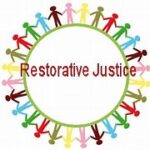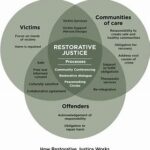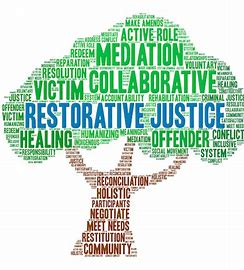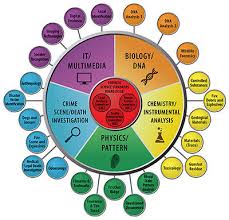Title: Embracing Restorative Justice: Principles, Practices, and Potentials in the United States
Abstract:
Restorative justice represents a paradigm shift in the criminal justice system, emphasizing accountability, healing, and community engagement over punitive measures. In the United States, where mass incarceration and recidivism rates remain high, restorative justice practices offer an alternative approach to addressing crime and conflict, focusing on repairing harm, restoring relationships, and promoting rehabilitation. This essay provides a comprehensive analysis of restorative justice practices in the United States, examining their philosophical foundations, implementation challenges, and transformative potential. Drawing on case studies, empirical research, and expert insights, it explores the principles of restorative justice, assesses the effectiveness of restorative programs, and highlights the role of stakeholders in promoting a more equitable and restorative approach to justice.
Introduction:
The traditional criminal justice system in the United States, characterized by punitive measures and adversarial processes, has long been criticized for its focus on punishment rather than rehabilitation, its disproportionate impact on marginalized communities, and its failure to address the underlying causes of crime.

In recent years, there has been growing interest in restorative justice as an alternative approach that seeks to repair harm, promote healing, and restore relationships between victims, offenders, and communities. Rooted in indigenous traditions and guided by principles of accountability, empathy, and inclusivity, restorative justice offers a promising framework for transforming the way society responds to crime and conflict. This essay aims to provide a comprehensive examination of restorative justice practices in the United States, exploring their philosophical underpinnings, implementation challenges, and potential for promoting social justice and reconciliation.
Philosophical Foundations of Restorative Justice:
Restorative justice is grounded in a set of principles and values that prioritize the needs of victims, promote accountability, and seek to address the root causes of crime. Some key principles of restorative justice include:
Repairing Harm:
Restorative justice focuses on repairing the harm caused by crime through dialogue, restitution, and community service. Rather than viewing crime as a violation of laws or rules, restorative justice emphasizes the harm done to individuals and communities and seeks to address the needs of those affected by the offense.
Building Relationships:
Restorative justice emphasizes the importance of building relationships and fostering empathy between victims, offenders, and community members. By creating opportunities for dialogue and understanding, restorative justice seeks to humanize the parties involved and promote a sense of connection and shared responsibility for addressing harm.
Promoting Accountability:
Restorative justice holds offenders accountable for their actions by encouraging them to take responsibility for the harm they have caused and to make amends to those affected. Accountability in restorative justice is not punitive but focuses on understanding the impact of one’s actions and taking steps to repair the harm done.
Empowering Stakeholders:
Restorative justice seeks to empower victims, offenders, and community members to participate in the resolution process and to have a voice in decisions that affect them. By involving stakeholders in decision-making and problem-solving, restorative justice promotes democratic values and strengthens social cohesion.

Implementation of Restorative Justice Practices:
Restorative justice practices take various forms and may be implemented at different stages of the criminal justice process, from pre-trial diversion programs to post-sentencing interventions. Some common restorative justice practices in the United States include:
Victim-Offender Mediation:
Victim-offender mediation brings together victims and offenders in a facilitated dialogue to discuss the impact of the offense, express their feelings and needs, and reach a mutually agreeable resolution. Mediation sessions may involve apologies, restitution agreements, and community service assignments aimed at repairing harm and promoting accountability.
Restorative Circles:
Restorative circles bring together victims, offenders, and community members in a structured dialogue process to address the underlying causes of conflict, explore solutions, and build consensus on how to repair harm and prevent future offenses. Circles may be facilitated by trained mediators or community members and often incorporate elements of storytelling, active listening, and consensus-building.
Community Conferencing:
Community conferencing involves bringing together victims, offenders, and community representatives to discuss the impact of the offense, identify underlying issues, and develop a plan for addressing harm and promoting accountability. Conferences may include discussions of the offense, its impact on individuals and communities, and potential solutions, such as restitution, community service, or mentoring programs.
Restorative Diversion Programs:
Restorative diversion programs offer alternatives to traditional prosecution and punishment for low-level offenders, diverting them from the formal criminal justice system and providing opportunities for rehabilitation and reintegration. Diversion programs may include restorative justice interventions, such as victim-offender mediation, counseling, and skill-building workshops, aimed at addressing the underlying causes of offending behavior and preventing future recidivism.

Challenges and Criticisms of Restorative Justice:
While restorative justice holds promise as an alternative approach to addressing crime and conflict, it also faces a range of challenges and criticisms that must be addressed to realize its full potential. Some key challenges include:
Limited Access and Resources:
Access to restorative justice programs may be limited due to lack of funding, availability of trained facilitators, and awareness of restorative options among stakeholders. Disparities in access to justice may exacerbate existing inequalities and undermine the effectiveness of restorative interventions.
Resistance from Stakeholders:
Resistance from stakeholders within the criminal justice system, including law enforcement, prosecutors, and judges, may hinder the adoption and implementation of restorative justice practices. Skepticism about the efficacy of restorative approaches, concerns about victim safety, and adherence to traditional punitive models of justice may pose barriers to systemic change.
Ethical and Procedural Concerns:
Restorative justice raises ethical and procedural concerns related to due process, victim rights, and offender accountability. Critics argue that restorative practices may prioritize reconciliation over legal rights, coerce victims into forgiving offenders, or fail to hold offenders sufficiently accountable for their actions.
Complexity of Cases and Needs:
Restorative justice may be ill-suited to addressing complex cases involving serious offenses, multiple victims, or high levels of conflict and trauma. Some cases may require specialized interventions, such as mental health treatment, substance abuse counseling, or intensive supervision, that go beyond the scope of restorative practices.
Cultural Sensitivity and Inclusivity:
Restorative justice must be sensitive to cultural differences, power dynamics, and social inequalities that may shape the experiences and needs of victims, offenders, and communities. Inclusive practices that recognize diverse identities, values, and perspectives are essential to ensuring that restorative interventions are respectful, equitable, and effective.

Effectiveness and Outcomes of Restorative Justice:
Despite the challenges and criticisms it faces, restorative justice has demonstrated positive outcomes in terms of victim satisfaction, offender accountability, and community engagement. Research studies have found that restorative justice interventions are associated with lower rates of recidivism, higher levels of victim empowerment, and greater satisfaction with the justice process compared to traditional court proceedings. Restorative justice has also been shown to promote healing, reduce trauma, and strengthen social bonds within communities affected by crime and conflict. By focusing on repairing harm, restoring relationships, and promoting reconciliation, restorative justice offers a transformative approach to justice that has the potential to create safer, more resilient, and more equitable communities.
Conclusion:
Restorative justice represents a paradigm shift in the way society responds to crime and conflict, emphasizing healing, reconciliation, and community empowerment over punishment and retribution. In the United States, where the criminal justice system is characterized by mass incarceration, racial disparities, and high rates of recidivism, restorative justice offers an alternative approach that prioritizes the needs of victims, promotes accountability, and addresses the underlying causes of offending behavior.

While restorative justice faces challenges and criticisms, its transformative potential in promoting social justice, healing trauma, and strengthening communities cannot be overstated. By embracing restorative principles, investing in restorative practices, and engaging stakeholders in dialogue and collaboration, the United States can work towards building a more just, compassionate, and inclusive society for all.



